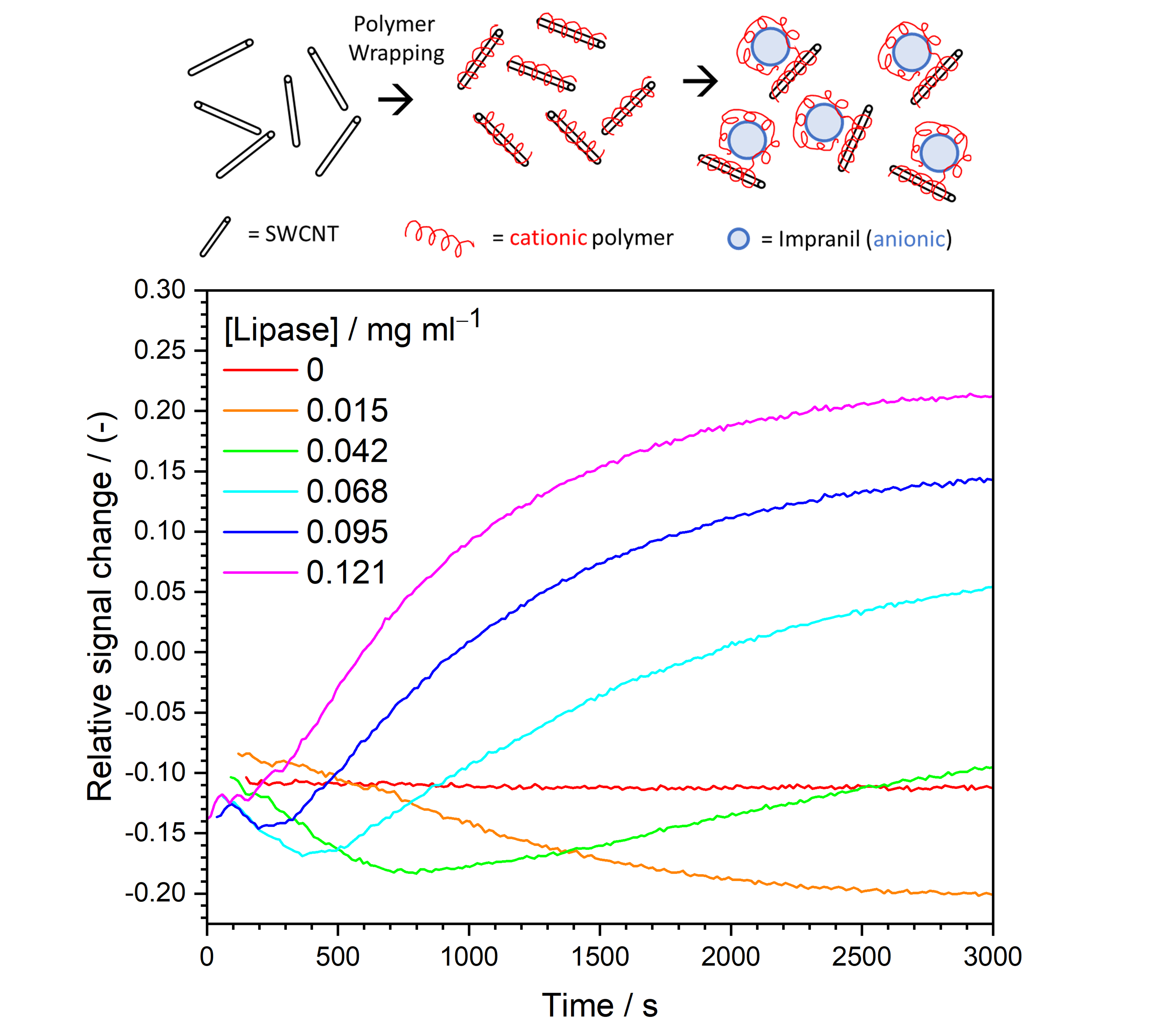2022 Annual Meeting
(509b) Award Submission: Single-Walled Carbon Nanotube Based NIR Sensors for Measuring Enzymatic Depolymerization of Polyurethanes
Polyurethanes (PU) are synthetic polymers applied as coatings, adhesives, sealants and elastomers (CASE). They are designed to resist environmental factors, and thus the waste deposal of PU becomes an important issue. Enzymatic depolymerization is a promising, sustainable route to recycle polyurethanes waste; however, traditional characterization methods for determining the biodegradation rate of PU are time intensive and the sensitivities of these methods are low, leading to the poor compatibility to high throughput screening campaigns to find and optimize enzymes for processing polyurethanes. Thus, finding a new method to measure the biodegradation rate of polyurethane is needed. Herein, we propose the first single-walled carbon nanotube (SWCNT) based NIR fluorescence sensors for measuring the enzymatic depolymerization of Impranil® DLN, a commonly applied polyurethanes dispersion for qualitatively determining the depolymerization rate. Through wrapping the SWCNTs with cationic polymer, ionic bonds are formed between SWCNTs and Impranil, increasing the sensitivity of the sensor. Kinetic analysis and modeling show the sensor response follows a modified Langmuir adsorption model that both the Impranil and its depolymerization product would attribute to the surface coverage change of SWCNTs, leading to variation in the local dielectric environment and thus the fluorescence signal change of the SWCNTs. The presented sensor design provides a route for rapid measurement of enzyme activity towards Impranil and can potentially be applied to measure the enzymatic depolymerization rates of other kinds of conventional, fossil-fuel derived polymers. Such a tool will be useful in rapid prototyping of enzymes and microbes as a solution to remediating plastic waste.
Figure:
Upper panel: Schematic illustration of the synthesis method of the SWCNTs sensor
Lower panel: Typical time traces of the relative fluorescence signal change at 1000 nm of the SWCNT sensor. Time zero is set as the enzyme addition and the fluorescence signal intensity before adding enzyme is set as zero of the relative fluorescence signal intensity.
